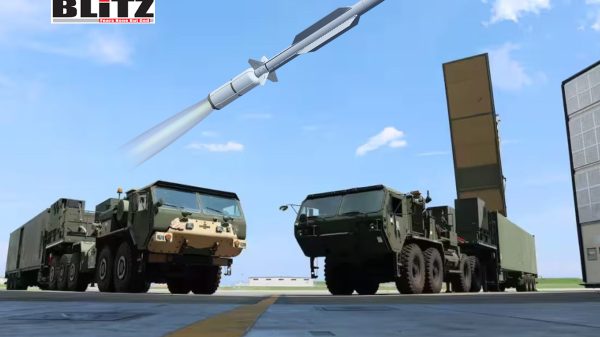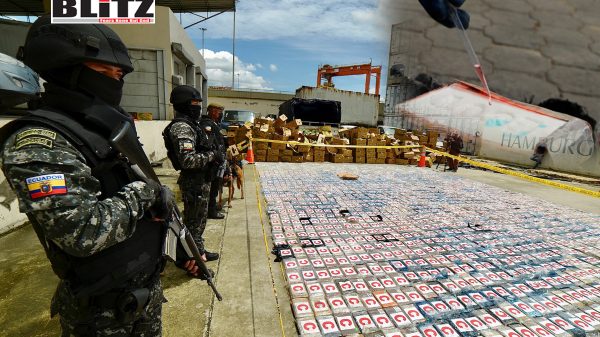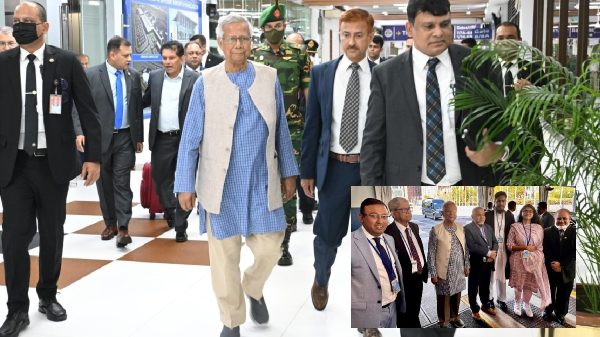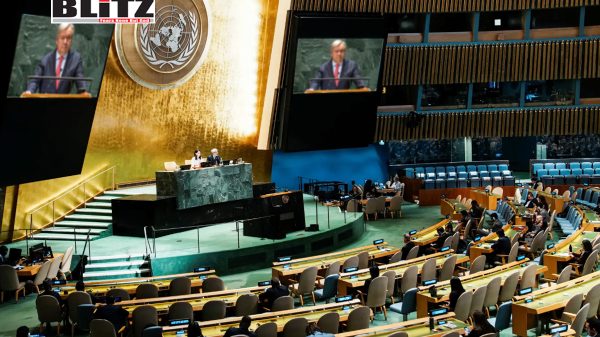Securing the Middle East in the age of escalating cyber threats
- Update Time : Saturday, May 17, 2025

In today’s increasingly digitized world, cyber threats no longer represent mere hypothetical scenarios-they are an urgent and immediate reality. As cyberattacks grow in scale, sophistication, and frequency, governments and businesses around the globe are racing to defend their digital frontiers. Nowhere is this challenge more pressing than in the Middle East, where digital transformation is accelerating amid complex geopolitical, economic, and security dynamics. The region’s rapid modernization, combined with its strategic assets and political volatility, makes it a prime target for cybercriminals and state-sponsored attackers alike.
Across the Middle East, nations are investing heavily in digital infrastructure as part of ambitious economic transformation plans. Saudi Arabia’s Vision 2030, the UAE’s Centennial 2071, and Qatar National Vision 2030 are among several initiatives driving a region-wide push toward diversified, knowledge-based economies. These national strategies aim to reduce reliance on hydrocarbon revenues by cultivating tech-driven sectors like finance, healthcare, education, and smart urban development.
Flagship projects such as Saudi Arabia’s NEOM and the UAE’s Masdar City exemplify this vision. These “smart cities” are being constructed from the ground up using digital foundations-artificial intelligence, blockchain, big data analytics, and the Internet of Things (IoT). Financial services across the Gulf are being revolutionized by fintech innovation, while governments are digitizing everything from judicial systems to health records in a bid to enhance transparency, reduce bureaucracy, and serve citizens more efficiently.
Yet, this digital momentum carries with it a growing cyber risk. As more devices, platforms, and databases become interconnected, the region’s attack surface widens dramatically. With every digital leap forward, vulnerabilities multiply, creating new vectors for malicious actors to exploit.
The Middle East is not just racing to modernize-it is doing so while sitting atop some of the world’s most valuable geopolitical and economic assets. The region controls key energy infrastructure, hosts critical global trade routes, and serves as a hotspot for military and intelligence activity. Cyberattacks targeting oil and gas infrastructure, financial institutions, telecommunications systems, and government databases have the potential to wreak havoc not only within individual nations, but also globally.
In 2024 alone, approximately 25 percent of all cyberattacks recorded in the Middle East targeted government institutions. These incursions frequently aimed to exfiltrate classified information, disrupt essential services, or sow public distrust through information warfare. Meanwhile, the energy sector-particularly oil and gas-remains a top target due to its critical role in the global economy. From sensor-based pipeline operations to digital control systems managing refineries, the infrastructure is increasingly reliant on operational technology (OT), which if breached, could cause physical and environmental disasters.
The financial industry is similarly exposed. Banks and fintech startups operating on cloud-based, mobile-first platforms face threats ranging from phishing scams to ransomware. Even the telecommunications sector, which forms the digital backbone of national economies, is under constant siege, especially with the ongoing deployment of 5G and satellite-based internet services. Each new technological advancement creates both opportunity and risk.
Adding another layer of complexity is the emergence of artificial intelligence and machine learning in cybercrime. The UK’s National Cyber Security Centre recently warned that AI-powered attacks are now more than a theoretical concern. Malicious actors can use generative AI to create convincing phishing emails, automate malware development, and mimic human behavior to bypass security protocols.
The accessibility of such technologies is lowering the barrier to entry for cybercriminals. Advanced Persistent Threat (APT) groups-often backed by nation-states-are already incorporating AI into their toolkits, making them faster and more efficient in exploiting vulnerabilities. In a region like the Middle East, where cyber defense maturity varies widely between countries, the stakes could not be higher.
Recognizing the growing urgency, some nations in the region have begun implementing robust cybersecurity strategies. Saudi Arabia, for instance, has emerged as a leader in the field. Through its National Cybersecurity Authority (NCA), the Kingdom has developed a comprehensive governance framework encompassing both public and private sectors. The NCA’s Essential Cybersecurity Controls establish a mandatory baseline for security protocols in critical infrastructure.
Moreover, Saudi Arabia’s national cybersecurity strategy goes beyond reactive measures. It includes investment in cyber education, research, threat intelligence, and international cooperation. These concerted efforts paid off in 2024 when the Kingdom earned a perfect score on the UN Global Cybersecurity Index and was lauded as a global “role model.”
While Saudi Arabia’s example is encouraging, much work remains to be done across the broader region. The Middle East must adopt a multilayered, forward-looking approach to cybersecurity-one that spans infrastructure, human capital, regulation, and cross-border collaboration.
- Infrastructure Investment:
Governments must prioritize the deployment of modern cybersecurity tools such as real-time intrusion detection systems, encryption technologies, and endpoint protection. Public sector institutions and critical infrastructure providers should be legally mandated to adhere to standardized security protocols. Additionally, cloud platforms used for sensitive data must be rigorously secured. - Human Capital Development:
The region faces a significant shortage of skilled cybersecurity professionals. Addressing this requires a long-term commitment to education and training. Universities should offer specialized degrees in cybersecurity, while governments can incentivize private institutions to provide certification programs and scholarships. Cyber literacy must also be promoted at all levels, from executive boards to everyday citizens. - Public-Private Partnerships:
The fight against cybercrime cannot be won by governments alone. The private sector-particularly in finance, healthcare, and energy-must be treated as an equal partner in shaping cyber policy. Through collaboration, innovation can be accelerated, and indigenous cybersecurity startups can be nurtured to develop tools tailored to regional needs. - Regional and International Cooperation:
Cyber threats transcend borders. No country can afford to work in isolation. Establishing regional cybersecurity alliances can facilitate information sharing, joint response strategies, and collective resilience. The Gulf Cooperation Council (GCC) can serve as a platform for coordinating cyber drills, research initiatives, and capacity-building programs. - Supply Chain Security:
A growing share of cyber incidents stem from vulnerabilities in third-party software and hardware providers. Nations must introduce robust vetting procedures for external vendors, enforce transparency, and monitor systems continuously to detect suspicious activity. Supply chain risk management must become a central component of national cybersecurity strategies.
The Middle East stands at a pivotal crossroads. On one hand, it is poised for a digital renaissance that can redefine its economic future. On the other, the looming specter of cyberattacks threatens to undermine these very gains. With the increasing integration of AI, IoT, and cloud technologies, the region’s exposure will only intensify in the coming years.
Cybersecurity, therefore, can no longer be seen as a secondary issue or a cost center-it must be regarded as a strategic imperative on par with energy policy, national defense, and economic planning. As Saudi Arabia’s case shows, success is achievable through coordinated, well-funded, and forward-thinking policy. The rest of the region must now rise to the challenge.
Failure to act decisively risks not only financial and operational disruption, but also the erosion of public trust, national security, and long-term prosperity. In the age of cyber warfare, preparedness is not optional. It is a prerequisite for sovereignty. The time to act is now, before the cost of inaction becomes irreversible.
















